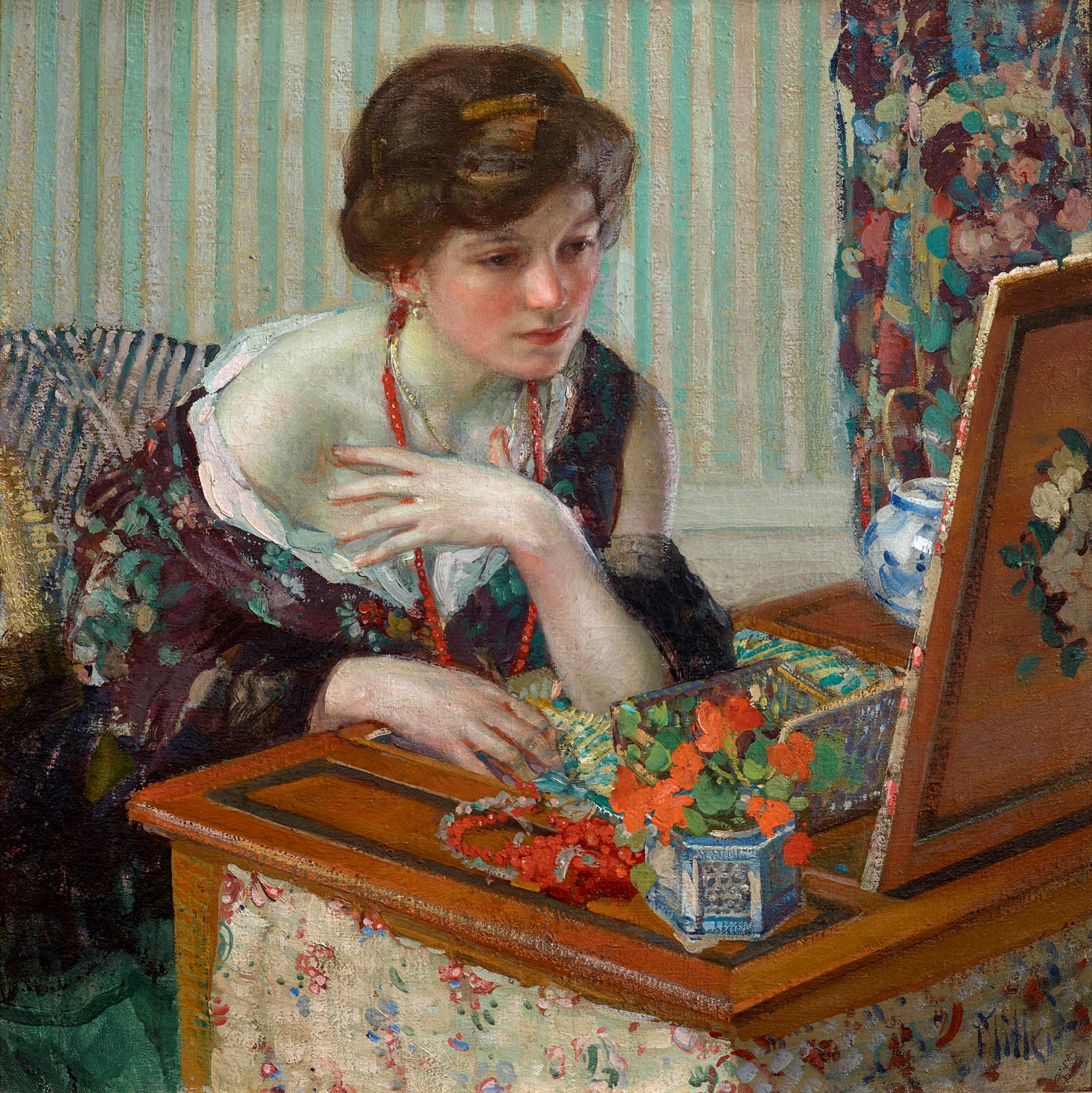It was probably in 1909 at Giverny, France, that the American painter Richard E. Miller began to experiment with an Impressionist style. Like his friend Frederick Frieseke, he frequently used his wife as a model, and he also sometimes painted his infant daughter Elsbeth, who was born in Giverny in June 1909. Miller's Giverny pictures were widely admired by his contemporaries for their fresh color, vigorous broken brush-work, lively and scintillating surface patterns, and decorative appeal. Indeed, Miller declared in 1912 that "Art's mission is not literary, the telling of a story, but decorative, the conveying of a pleasant optical sensation."
During his Giverny period, Miller favored soft pastel hues. Light pinks, greens, and blues as well as purple and brownish-gold dominate his delicate color schemes. Background areas likewise often embody subtle juxtapositions of contrasting and complementary hues. The artist frequently posed his models in luxurious gowns. Miller's pictures are characterized by a strong sense of formal design—a reflection of the influence of Post-Impressionism. He was extremely knowledgeable about the chemistry of painting. He used this expertise to develop a strongly individual technique. His student Frederick K. Detwiller noted that he "began his pictures on absorbent cotton, very much like a watercolor. He built with thin washes of pigment and then added many impressions of high-keyed colors for finish."


 Richard E. Miller
Richard E. Miller